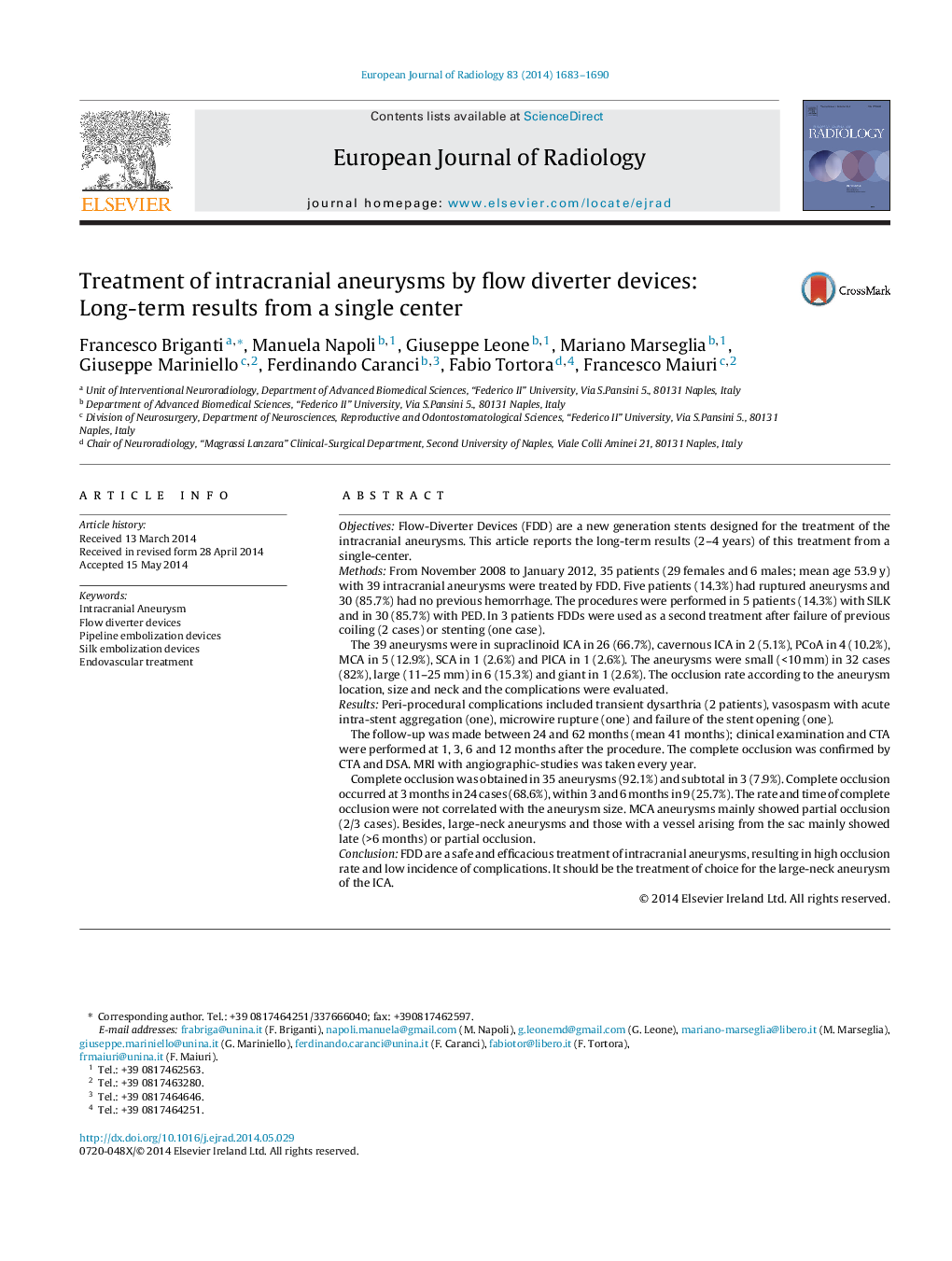| Article ID | Journal | Published Year | Pages | File Type |
|---|---|---|---|---|
| 4225464 | European Journal of Radiology | 2014 | 8 Pages |
•We report the long-term results (2–4 years) with Flow Diverter Devices (FDD) from a single-center.•We recommend the use of FDD for large-neck aneurysms of the ICA syphon.•We think that more sophisticate FDD will reduce the incidence of technical adverse events.
ObjectivesFlow-Diverter Devices (FDD) are a new generation stents designed for the treatment of the intracranial aneurysms. This article reports the long-term results (2–4 years) of this treatment from a single-center.MethodsFrom November 2008 to January 2012, 35 patients (29 females and 6 males; mean age 53.9 y) with 39 intracranial aneurysms were treated by FDD. Five patients (14.3%) had ruptured aneurysms and 30 (85.7%) had no previous hemorrhage. The procedures were performed in 5 patients (14.3%) with SILK and in 30 (85.7%) with PED. In 3 patients FDDs were used as a second treatment after failure of previous coiling (2 cases) or stenting (one case).The 39 aneurysms were in supraclinoid ICA in 26 (66.7%), cavernous ICA in 2 (5.1%), PCoA in 4 (10.2%), MCA in 5 (12.9%), SCA in 1 (2.6%) and PICA in 1 (2.6%). The aneurysms were small (<10 mm) in 32 cases (82%), large (11–25 mm) in 6 (15.3%) and giant in 1 (2.6%). The occlusion rate according to the aneurysm location, size and neck and the complications were evaluated.ResultsPeri-procedural complications included transient dysarthria (2 patients), vasospasm with acute intra-stent aggregation (one), microwire rupture (one) and failure of the stent opening (one).The follow-up was made between 24 and 62 months (mean 41 months); clinical examination and CTA were performed at 1, 3, 6 and 12 months after the procedure. The complete occlusion was confirmed by CTA and DSA. MRI with angiographic-studies was taken every year.Complete occlusion was obtained in 35 aneurysms (92.1%) and subtotal in 3 (7.9%). Complete occlusion occurred at 3 months in 24 cases (68.6%), within 3 and 6 months in 9 (25.7%). The rate and time of complete occlusion were not correlated with the aneurysm size. MCA aneurysms mainly showed partial occlusion (2/3 cases). Besides, large-neck aneurysms and those with a vessel arising from the sac mainly showed late (>6 months) or partial occlusion.ConclusionFDD are a safe and efficacious treatment of intracranial aneurysms, resulting in high occlusion rate and low incidence of complications. It should be the treatment of choice for the large-neck aneurysm of the ICA.
